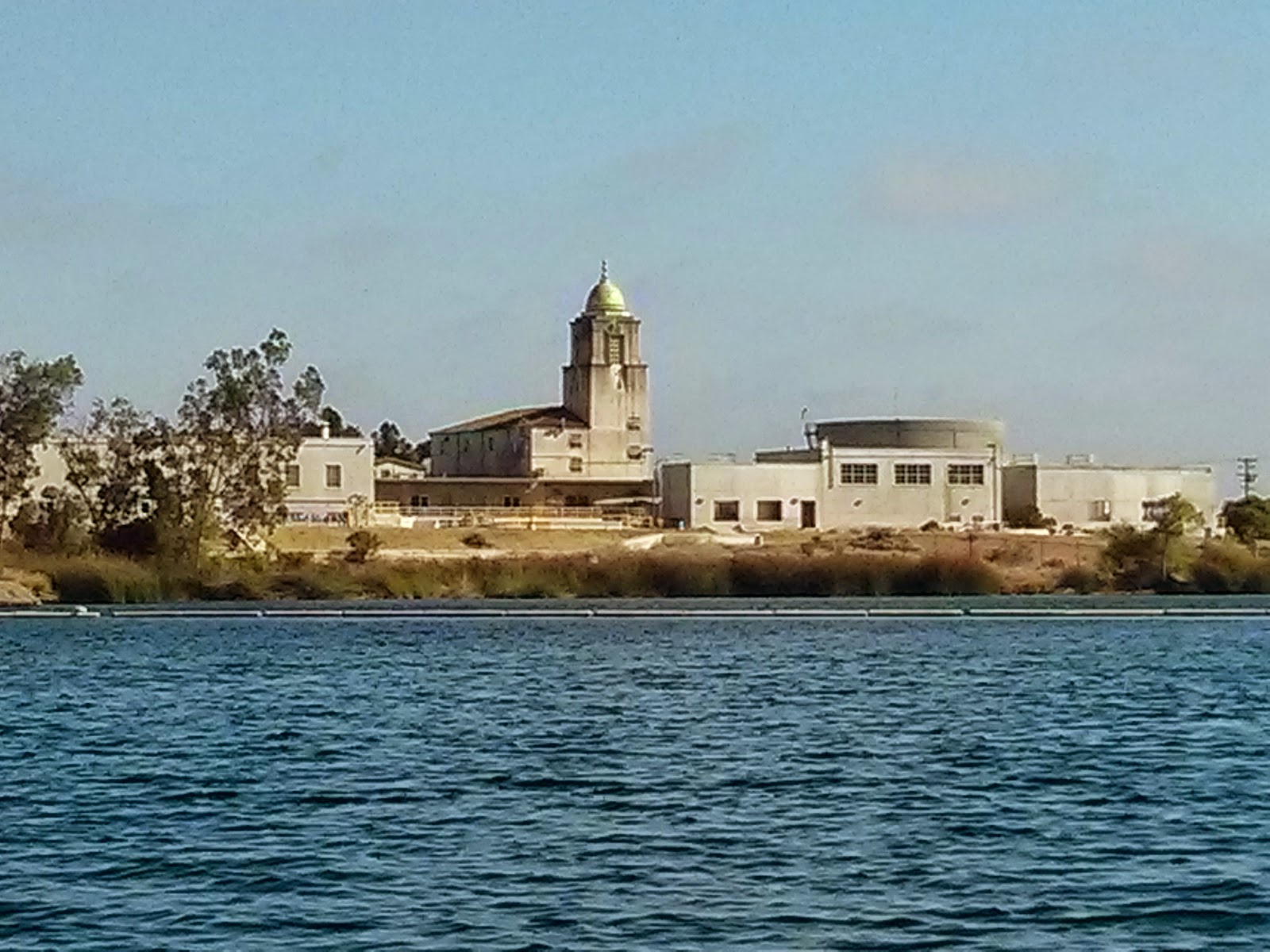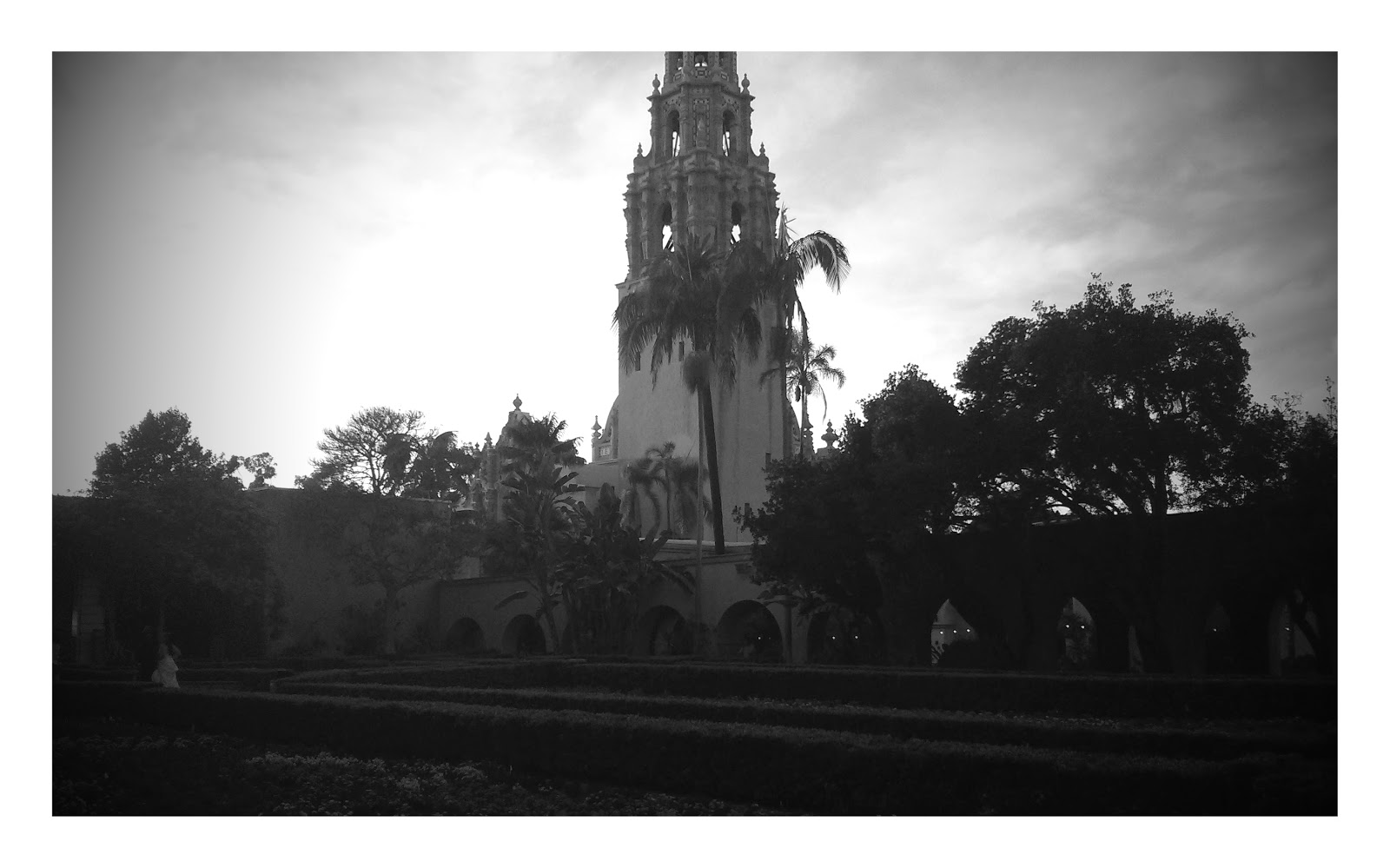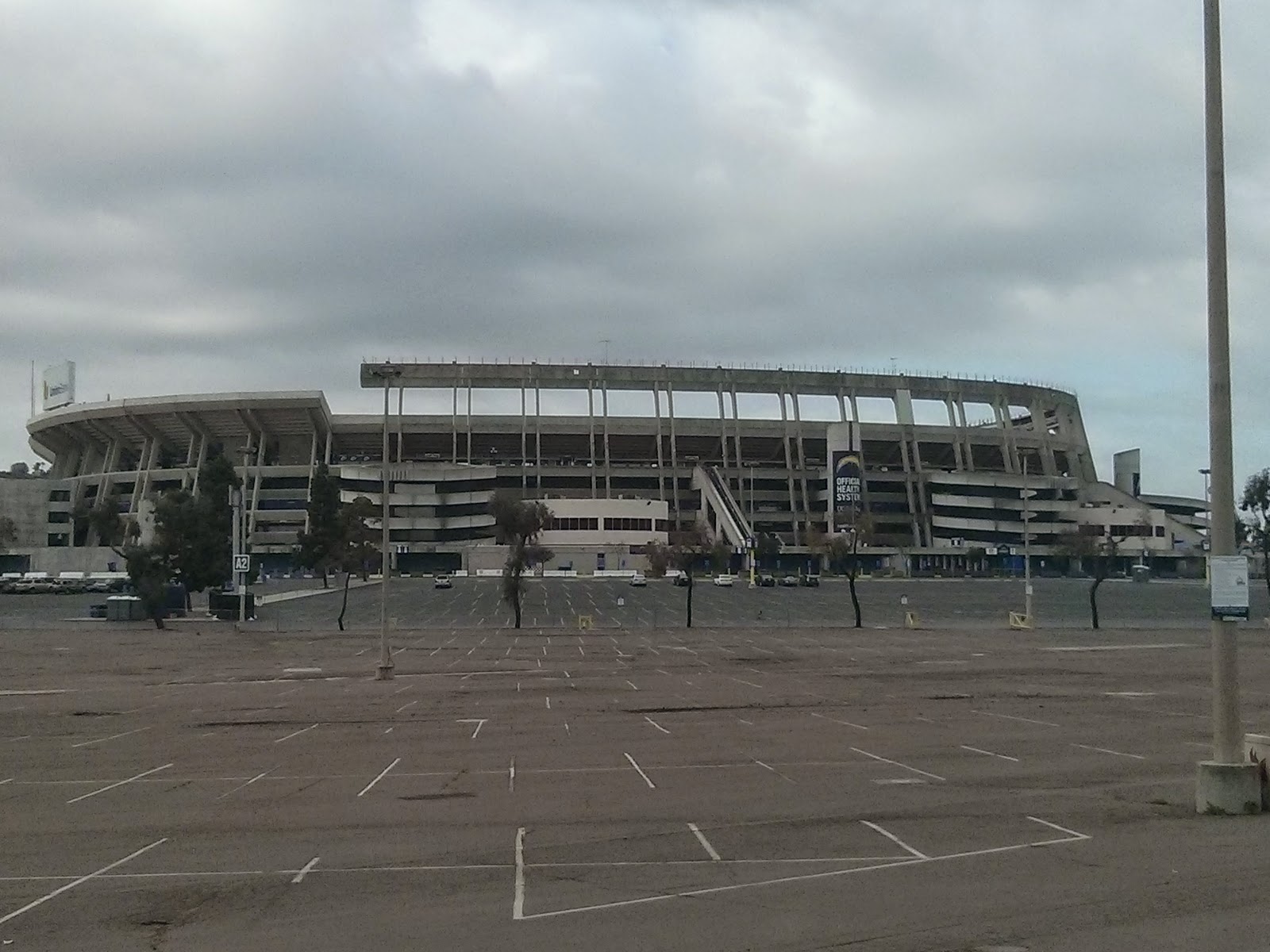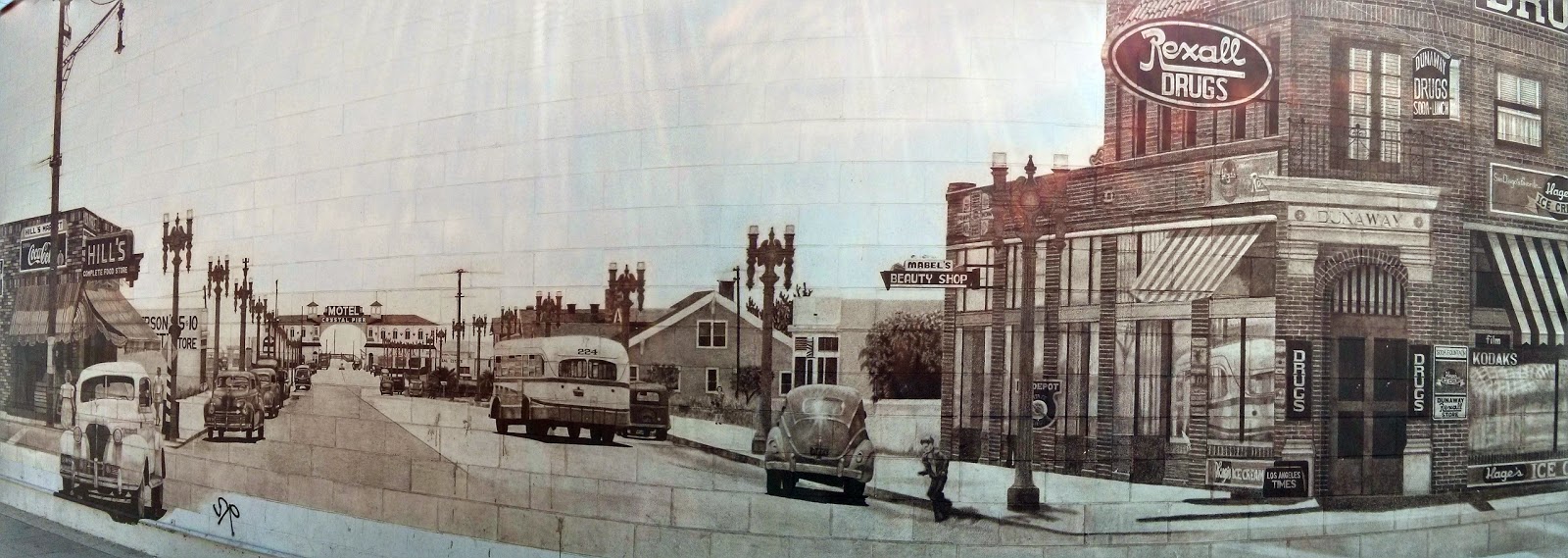Water, the worlds most precious resource is in short supply in San Diego. The prolonged drought has impacted cities and farmers across the region leading to higher costs and loss of crops. As the drought continues each of us has a responsibility to use water more sparingly and make small adjustments that lead to higher conservation rates.
We can all do something that allows us to reduce water consumption. Small savings here and there add up over time and create sustainable patterns of behavior. Most of the water we use and waste is based on habit and is not really related to necessity. There are a few places that are easy for you to make changes that can have a big impact.
-Shorter Showers: Showers are relaxing and we can spend a half hour or more just letting the water run. It is better to have either a shorter shower or shut the water off between wetting and rinsing.
-Fix Faucets and Running Toilets: Even if there is a small leak the gallons will keep on accumulating. Making sure everything runs properly is necessary.
-Buy Bottled Water: Drinking water is a popular purchase. You can consider purchasing healthy bottled water and cut back on your faucets a little. Most imported water is from other places.
-Use Full Laundry and Dish Loads: Laundry Machines and Dishwashers take a lot of water. Making sure that you are maximizing by filling the machines up saves lots of water.
-Upgrade to More Efficient Products: As you upgrade your appliances work on finding water efficient products. Water efficient products will have increasing appeal so don't be afraid to invest in the new model when timing is right.
The blog discusses current affairs and development of national economic and social health through unique idea generation. Consider the blog a type of thought experiment where ideas are generated to be pondered but should never be considered definitive as a final conclusion. It is just a pathway to understanding and one may equally reject as accept ideas as theoretical dribble. New perspectives, new opportunities, for a new generation. “The price of freedom is eternal vigilance.”—Thomas Jefferson
Showing posts with label san diego. Show all posts
Showing posts with label san diego. Show all posts
Monday, April 6, 2015
Monday, March 30, 2015
Solar Powered San Diego Encourages Ecological Advancement
San Diego is well on its way to becoming a city destined for environmental salvation. According to the non-profit Environment California Research & Policy Center San Diego Ranks second in the nation in terms of solar power usage. We are doing well in protecting our environment and ensuring a sustainable future. That doesn't mean we can't do more.
Creating streamlined processes for solar power installation approval as well as encouraging higher levels of solar power reliance is beneficial for setting the framework for sustainable cities. If there are any unnecessary restrictions on installing solar panels it will raise the overall customer costs and slow the pace of solar integration.
There are advantages to developing solar panels that include less reliance on outside sources of energy, lowering long-term costs, and reducing environmental costs. As more renewable sources are developed the city will lower its overall carbon footprint and slow its contribution to environmental problems.
Finding the right policies, awareness processes, and incentives helps to ensure people make a equitable choice to use renewable sources. With solar panels there is often a higher initial investment but much lower costs spread out over the duration of the panels. Making sure people understand where they can get panels and their true costs can tip the scales in consumer choice.
Solar panels and ecologically designed cities are the way of the future. Those cities in the process of transformation and building new infrastructure should consider the benefits of developing ecologically sound practices. San Diego is in a strong position to foster ecological hubs that spur new industries in environmental and blue economic development.
http://www.environmentcaliforniacenter.org/
Creating streamlined processes for solar power installation approval as well as encouraging higher levels of solar power reliance is beneficial for setting the framework for sustainable cities. If there are any unnecessary restrictions on installing solar panels it will raise the overall customer costs and slow the pace of solar integration.
There are advantages to developing solar panels that include less reliance on outside sources of energy, lowering long-term costs, and reducing environmental costs. As more renewable sources are developed the city will lower its overall carbon footprint and slow its contribution to environmental problems.
Finding the right policies, awareness processes, and incentives helps to ensure people make a equitable choice to use renewable sources. With solar panels there is often a higher initial investment but much lower costs spread out over the duration of the panels. Making sure people understand where they can get panels and their true costs can tip the scales in consumer choice.
Solar panels and ecologically designed cities are the way of the future. Those cities in the process of transformation and building new infrastructure should consider the benefits of developing ecologically sound practices. San Diego is in a strong position to foster ecological hubs that spur new industries in environmental and blue economic development.
http://www.environmentcaliforniacenter.org/
Monday, March 16, 2015
Learning the Skills that Match San Diego's Employment Needs
San Diego is a hot and trendy place these days (no pun intended) and draws a lot of motivated young people soaking up good times and seeking exciting employment opportunities. Many of these young people come from different places of the country and the world and have decided to place a shingle on San Diego's coastline. Ensuring that they have the "right skills" to succeed on the local market and feed growing local businesses is important for regional development.
The beauty of young people is that they are motivated and adaptable. A company could take in a fresh face and over time train them to successfully navigate their work environment. Corporate training can instill new knowledge, skills and abilities (KSA's) to ensure they can operate, build and/or sell new products/services. Young people seeking careers are willing receptors for knowledge.
Outside of corporate training students may come with a college degree that certifies that a level of knowledge has been obtained. That education will come with both general skills and industry specific skills. General skills apply to multiple industries and often focus on skills such as mathematical and writing while specific skills are focused more on those that are most applicable to their chosen industries.
Each regional area is comprised of various kinds of businesses that need their own type of skills. In San Diego you will find industries in blue technology, pharmaceuticals, military, science, micro-manufacturing, hospitality, tourism, and technology making the biggest industry employers readily apparent. Those employers need qualified talent that can fill their needs without adding significantly to their training budget.
The problem of misalignment between jobs and skills is not unique to San Diego. However, by encouraging the development of basic skills in high school and more specific skills in college the gap doesn't need to be as wide. Corporations will be required to train graduates to the specific needs of their company.
Some cities have put in place work oriented programs that retrain displaced and unemployed workers to fill local needs. At other times, corporations may band together and sponsor training programs that help them recruit top talent from the area. A few cities may actively seek specific skills by targeting people from other areas that work in related industries.
Developing skills locally by partnering with community colleges and universities helps in creating a home grown pool of talent. Where gaps still exist training should take precedence that encourages the closing of the skills gap. Feeding San Diego's businesses with qualified talent helps ensure that future investment and growth are possible when the time rises."Put your time, effort and money into training, grooming, and encouraging your greatest asset."- Tom Hopkins
The beauty of young people is that they are motivated and adaptable. A company could take in a fresh face and over time train them to successfully navigate their work environment. Corporate training can instill new knowledge, skills and abilities (KSA's) to ensure they can operate, build and/or sell new products/services. Young people seeking careers are willing receptors for knowledge.
Outside of corporate training students may come with a college degree that certifies that a level of knowledge has been obtained. That education will come with both general skills and industry specific skills. General skills apply to multiple industries and often focus on skills such as mathematical and writing while specific skills are focused more on those that are most applicable to their chosen industries.
Each regional area is comprised of various kinds of businesses that need their own type of skills. In San Diego you will find industries in blue technology, pharmaceuticals, military, science, micro-manufacturing, hospitality, tourism, and technology making the biggest industry employers readily apparent. Those employers need qualified talent that can fill their needs without adding significantly to their training budget.
The problem of misalignment between jobs and skills is not unique to San Diego. However, by encouraging the development of basic skills in high school and more specific skills in college the gap doesn't need to be as wide. Corporations will be required to train graduates to the specific needs of their company.
Some cities have put in place work oriented programs that retrain displaced and unemployed workers to fill local needs. At other times, corporations may band together and sponsor training programs that help them recruit top talent from the area. A few cities may actively seek specific skills by targeting people from other areas that work in related industries.
Developing skills locally by partnering with community colleges and universities helps in creating a home grown pool of talent. Where gaps still exist training should take precedence that encourages the closing of the skills gap. Feeding San Diego's businesses with qualified talent helps ensure that future investment and growth are possible when the time rises."Put your time, effort and money into training, grooming, and encouraging your greatest asset."- Tom Hopkins
Friday, March 13, 2015
The Benefits of Creating Win-Win Strategies as San Diego Goes Global
San Diego has decided that it is going to make a firm commitment to the global economy. An initiative of 30+ companies, San Diego Regional Economic Development Corporation, UC San Diego and the City of San Diego want to expand growth opportunities in the area by creating more export opportunities. Those export opportunities result in higher wages and more jobs but will rely heavily on win-win strategic outcomes.
Mayor Kevin Faulconer describes the Going Global initiative as "Opportunities and innovation abound in San Diego and it's time to tell the world (1)." The goal appears to be about getting products out of San Diego and into the global market while drawing investment into the region to capitalize on the core competencies of life sciences, blue technology and cyber knowledge.
According to the Go Global San Diego initiative San Diego is the 17th largest U.S. metro city, ranks 61st in terms of export intensity and 49th in terms of foreign-owned firms (2). San Diego has not fully capitalized on its inherent intellectual and human capital skills. The resources of many of the businesses that have global potential could be put toward exportation.
According to the Go Global San Diego site they will do this through a number of broad strategies:
-Catalyze growth of advanced industries.
-Drive Innovation through Talent: strengthen the workforce of today, deepen the workforce of the future.
-Realize CaliBaja’s potential through connections with priority and emerging markets.
-Mainstream global activity as a key component of regional business retention and expansion efforts.
-Maximize infrastructure assets.
The advantages of focusing on advanced industries is that they offer an opportunity to tap into a fast growing markets that spur additional investment. They also rely on a broad base of knowledge that supports medium and small businesses in the area. Wages are likewise higher in advanced industries raising the standard of living for local employees.
To truly do this well means the area will need to develop a brand that can sell the city as both a pro-business investment mecca and as a place where the quality of living is high. Local government should seek to draw in public and private stakeholders while ensuring decisions are based on bi-partisan strategic logic that creates the most winners. No need to create fights where no benefits are to be found.
There are advantages to getting everyone on the same page that isn't found in many cities across the country. When people can formulate a shared image of a city that helps them draw their self-interest the system becomes much more efficient through thousands of small actions aligned around that image. This will require not only business to succeed but also foster skill based income growth of motivated employees. Economic development that creates win-win outcomes will find support among investors while reducing inherent risks associated with uncertainty in regulations, labor allocation, governance, and socio-political turmoil.
You can read more at http://www.sandiegobusiness.org/goglobalsandiego
Mayor Kevin Faulconer describes the Going Global initiative as "Opportunities and innovation abound in San Diego and it's time to tell the world (1)." The goal appears to be about getting products out of San Diego and into the global market while drawing investment into the region to capitalize on the core competencies of life sciences, blue technology and cyber knowledge.
According to the Go Global San Diego initiative San Diego is the 17th largest U.S. metro city, ranks 61st in terms of export intensity and 49th in terms of foreign-owned firms (2). San Diego has not fully capitalized on its inherent intellectual and human capital skills. The resources of many of the businesses that have global potential could be put toward exportation.
According to the Go Global San Diego site they will do this through a number of broad strategies:
-Catalyze growth of advanced industries.
-Drive Innovation through Talent: strengthen the workforce of today, deepen the workforce of the future.
-Realize CaliBaja’s potential through connections with priority and emerging markets.
-Mainstream global activity as a key component of regional business retention and expansion efforts.
-Maximize infrastructure assets.
The advantages of focusing on advanced industries is that they offer an opportunity to tap into a fast growing markets that spur additional investment. They also rely on a broad base of knowledge that supports medium and small businesses in the area. Wages are likewise higher in advanced industries raising the standard of living for local employees.
To truly do this well means the area will need to develop a brand that can sell the city as both a pro-business investment mecca and as a place where the quality of living is high. Local government should seek to draw in public and private stakeholders while ensuring decisions are based on bi-partisan strategic logic that creates the most winners. No need to create fights where no benefits are to be found.
There are advantages to getting everyone on the same page that isn't found in many cities across the country. When people can formulate a shared image of a city that helps them draw their self-interest the system becomes much more efficient through thousands of small actions aligned around that image. This will require not only business to succeed but also foster skill based income growth of motivated employees. Economic development that creates win-win outcomes will find support among investors while reducing inherent risks associated with uncertainty in regulations, labor allocation, governance, and socio-political turmoil.
You can read more at http://www.sandiegobusiness.org/goglobalsandiego
Tuesday, March 10, 2015
San Diego's Technology Workers Build Innovative Development
Technology workers are an important part of the American economy and represent one of the fastest growing occupations in the country. Technology workers feed the business and economic engines within San Diego but face some wider challenges. Three technology executives with a a combined 4 billion dollars in revenue and 9,000 employees highlighted the state of local talent in San Diego on Connect (1). There are a few additional ideas that can further the conversation.
A great portion of society relies on technology and the easy transference of information and resources. Knowledge intensive industries need this easy flow of information that moves within and between companies. Technology workers help to foster that transference and use information to its maximum extent ensuring information develops other sectors.
Technology workers are important for modern companies and help push industries to develop at a faster rate. For example, investment in IT contributes to worker manufacturing productivity (Chaodong, et. al., 2011). Workers that are able to update their skills and use technology effectively will speed up the rate of production.
A great portion of society relies on technology and the easy transference of information and resources. Knowledge intensive industries need this easy flow of information that moves within and between companies. Technology workers help to foster that transference and use information to its maximum extent ensuring information develops other sectors.
Technology workers are important for modern companies and help push industries to develop at a faster rate. For example, investment in IT contributes to worker manufacturing productivity (Chaodong, et. al., 2011). Workers that are able to update their skills and use technology effectively will speed up the rate of production.
Developing home grown talent was not always on the priority list. Because supply was not always sufficient companies
outsourced many of their technology worker needs to cheaper economies (Shao
& David, 2007). Having a sufficient local supply skilled technology workers helps keep jobs local.
It should also be remember that having the right kind of local talent in growing industries makes San Diego more ripe for business investment. The type of highly skilled and information intensive businesses in the area need a solid funnel of people to manage the transference of that information. Companies invest in places where the components to growth can be found.
Despite these apparent advantages there are other problems beyond the technology sector itself. With recruiting and developing technology workers that are willing to stay in San Diego. People may love the beaches but hate the cost of living near those beaches. The executives mentioned high state taxes, poor infrastructure, high cost of housing, small airport, and the slow pace of government responsiveness to issues. The problems cited are more on a level that impacts multiple businesses versus a specific industry but nevertheless should be calculated into corporate strategies.
Despite these apparent advantages there are other problems beyond the technology sector itself. With recruiting and developing technology workers that are willing to stay in San Diego. People may love the beaches but hate the cost of living near those beaches. The executives mentioned high state taxes, poor infrastructure, high cost of housing, small airport, and the slow pace of government responsiveness to issues. The problems cited are more on a level that impacts multiple businesses versus a specific industry but nevertheless should be calculated into corporate strategies.
Chaodon, H. et. al. (2011). Information technology
investment and manufacturing worker productivity. Journal of Computer Information Systems, 52 (2).
Shao, B. & David, J. (2007). The impact of offshore
outsourcing on IT workers in developed countries. Communications of the ACM, 50 (2).
Wednesday, March 4, 2015
Benefits and Detractors of Bungalow Homes in San Diego
 San Diego City Council tentatively approved Bungalow homes in San Diego. It as idea that includes breaking multi-unit properties into small bungalow style houses that allow for more housing ownership and could potentially help in reducing the excessive cost of housing. The benefits and detractors of bungalow homes appears to be a numbers game that allows for the placement of more homes on a single piece of land.
San Diego City Council tentatively approved Bungalow homes in San Diego. It as idea that includes breaking multi-unit properties into small bungalow style houses that allow for more housing ownership and could potentially help in reducing the excessive cost of housing. The benefits and detractors of bungalow homes appears to be a numbers game that allows for the placement of more homes on a single piece of land. One of the best ways to increase active participation in neighborhoods is to increase ownership. It would seem that taking existing multi-unit homes where rentals are common and breaking them into many more small homes would be beneficial. It increases the amount of people and the management of space on a single lot.
People who own their homes have a vested interest in their neighborhoods and the community. Their property value is reflected by crime rates, cleanliness, housing condition, schools, and more. Raising the amount of home owners in San Diego also raises their interests in the community.
The mechanics of demand and supply can impact housing costs. Singles and starting families can purchase homes much cheaper than they could a much larger home. It gives them a way to build a level of equity without having to pay for all the extras they may not need. Small homes may not flatter their ego but do provide value in its fundamental purpose.
A potential detractor to this policy may depend on how many units are being converted. If developers are taking 4 unit apartments and breaking them down into 3 bungalows there isn't much advantage for San Diego housing. The goal should be to increase the effective use of land and space by adding more units to the system. Two unit multi-family houses should become three bungalows, etc...
Time will tell if the policy makes sense. If the policy works well it should be expanded to single-family neighborhoods; especially in areas in need of revitalization. As San Diego struggles with housing costs, old infrastructure, and a new generation of people who want to buy homes they will need new solutions. Some will work and some won't. It is the process of trying, learning and developing that makes all the difference in the long run.
Monday, March 2, 2015
Improving San Diego’s Infrastructure to Reduce Resource Costs
Infrastructure determines how efficiently we can use
resources to encourage economic growth while conserving the environment. Old infrastructure
can put pressure on electricity, housing, water, transportation and business
development. Ensuring that infrastructure improves as the city grows will help
reduce future costs that impact the quality and cost of living locally.
Infrastructure influences the amount of fuel,
electricity, water, road ways, public transportation and other systems used. It
is a basic motherboard that all other things are built upon. The infrastructure
will determine which type of structures will be built and how wide versus large
a city will become. Proper infrastructure impacts just everything within the
city.
As an example, consider how a Stanford study on the
California drought was determined to be human driven and likely to be a regular
visitor (1).
This means that we should expect warmer summers, less rain, and more problems
keeping up with nature’s elements which will raise the cost of living for
everyone. People will need to pay more for resources they are currently using.
For example, spread out housing can use lots of
water to keep laws green and copper wire to keep connected. It will cost more
to get basic utilities in older systems than newer systems. Properly built multi-unit housing can be designed to
make better use of space, natural resources, and aesthetics to improve living
standards at a cheaper cost.
The cost of housing has increased to the point of
putting pressure on wages, families, and commerce itself. As a larger
percentage of income moves toward housing it will soak resources from
restaurants, college savings, clothing, family budgets, etc… Eventually
increased costs will impact other things such as wages or
less disposable income.
Of course there is also public transportation itself
that helps reduce congestion, pollution, roadways, and lifestyle. Getting
additional light rail lines, sectioning off bike paths, and finding alternative
transportation helps improve the functioning of the system. Manhattan provides an example where 82% of people get to work without using a car (Goodspeed, 2006).
Infrastructure is an important aspect of San Diego and any other city that wants to ensure growth in the future. Planning is focusing on today's problems and tomorrows solutions to see if both can be met. There are no simple solutions as changes are slow, large, and long-lasting. Trying to think 20 years down the road can be difficult. Tomorrows problems are rearing their head today.
Goodspeed, B. (2006). It’s not easy being greenest:
10 cities to watch. The Environmental
Magazine, 17 (4).
Sunday, March 1, 2015
How to get ahead in your career on rainy days?
It is raining outside and you might be wondering what to do when the weather is nasty. The forecaster believe that the rain will last until at least Monday night. Whether you are a lover or hater of the rain it does give you some opportunities to get a few things done that may have been sitting on your back plate. Instead of fretting about having limited outdoor access consider a few other alternatives.
You can spend the time with your family, friends or projects but since this is a business oriented blog I think it is beneficial to think about those things that are most helpful to your career. This can be difficult for people who never really thought about what they want to accomplish. Here are a few ideas:
-Pick up a business or career book.
-Set goals and steps for your career.
-Search out new and future opportunities that can expand your career knowledge.
-Shop online for new clothes, office equipment or items you need to research.
-Spend time thinking about what you want out of your life and your career.
-Engage in some work-life projects that help you enjoy your down time.
-Prepare your lunch, clothing, and other times to save time for the week.
-Organize your files, records and other items.
-Take care of your family.
You can spend the time with your family, friends or projects but since this is a business oriented blog I think it is beneficial to think about those things that are most helpful to your career. This can be difficult for people who never really thought about what they want to accomplish. Here are a few ideas:
-Pick up a business or career book.
-Set goals and steps for your career.
-Search out new and future opportunities that can expand your career knowledge.
-Shop online for new clothes, office equipment or items you need to research.
-Spend time thinking about what you want out of your life and your career.
-Engage in some work-life projects that help you enjoy your down time.
-Prepare your lunch, clothing, and other times to save time for the week.
-Organize your files, records and other items.
-Take care of your family.
Saturday, February 28, 2015
Ideas for the Development of Qualcomm Stadium
Qualcomm stadium is a big part of San Diego's identity but may soon be underutilized and difficult to sell. If a new stadium is approved this will leave a very large stadium facility in the prime location of Mission Valley with only a few feasible options. Most of these options are likely to include destroying the stadium and finding a new use for the prime estate. A few ideas have been floating around.
The movement downtown is anything but certain. MTS’ chief executive, Paul Jablonski, in a letter to the Mayor Kevin Faulkner's task force outlines that building a new stadium is impractical at best and would be nearly 10 years out before completion (2). The proposal is to include an expansion on the convention center and obtain parts of the MTS bus yard.
In the scenario where a new site for the Chargers is settled upon this would leave the old Qualcomm stadium up for grabs. The problem is that there are not a whole lot of entities around San Diego that would have a use for such a stadium making it more likely to be razed to the ground. This would leave a prime development spot right in the mix of upscale Mission Valley.
According to a Fox 5 article Senator Marty Bloc would like to see the stadium redeveloped into a housing community for San Diego State University. Easy access to the trolley would be beneficial for student access to the university (1). The funds for that project have not yet been worked out and university leaders may not bit. The ideas are still in toss up phase.
Traffic has been cited as one of the major concerns. The stadium has received tens of thousands of visitors and has at least two egress points with one leading to the highway and the other leading up a large hill. There is the potential to create new egress points as access restriction is no longer needed when a new use has been found.
A couple of ideas could include:
-Residential: Whether it is student housing or a new residential district reducing the pressure on housing right on a trolley line and near highways is solid use of infrastructure. The blank slate allows for the creation of multi-unit dwellings that maximizes space and neighborhood quality for students or families.
-Refurbishing for Chargers: There is always the possibility of saving some money and refurbishing the stadium for the Chargers by improving on its layout. This would mean there isn't a new stadium downtown and the taxpayers would need to flip less of the construction bill.
-Multi-Use Site: If no one wants to develop such a large site it is possible to sell off sections for different types of buyers. You may end up with a residential area, a business district, and a couple of other uses on the old site.
-Maintain the Stadium for Other Users : The site could be turned into a new race track, a recreation facility or other use. It may be too much upkeep costs for this type of use and its profit potential would be difficult to maximize.
-Manufacturing: The building could be razed and the site sold to a manufacturing facility that would bring new jobs to San Diego. The site would have easy access to highways. A manufacturing site could include autos, prefab housing, recreational crafts, robotics, or other industrial projects.
The movement downtown is anything but certain. MTS’ chief executive, Paul Jablonski, in a letter to the Mayor Kevin Faulkner's task force outlines that building a new stadium is impractical at best and would be nearly 10 years out before completion (2). The proposal is to include an expansion on the convention center and obtain parts of the MTS bus yard.
In the scenario where a new site for the Chargers is settled upon this would leave the old Qualcomm stadium up for grabs. The problem is that there are not a whole lot of entities around San Diego that would have a use for such a stadium making it more likely to be razed to the ground. This would leave a prime development spot right in the mix of upscale Mission Valley.
According to a Fox 5 article Senator Marty Bloc would like to see the stadium redeveloped into a housing community for San Diego State University. Easy access to the trolley would be beneficial for student access to the university (1). The funds for that project have not yet been worked out and university leaders may not bit. The ideas are still in toss up phase.
Traffic has been cited as one of the major concerns. The stadium has received tens of thousands of visitors and has at least two egress points with one leading to the highway and the other leading up a large hill. There is the potential to create new egress points as access restriction is no longer needed when a new use has been found.
A couple of ideas could include:
-Residential: Whether it is student housing or a new residential district reducing the pressure on housing right on a trolley line and near highways is solid use of infrastructure. The blank slate allows for the creation of multi-unit dwellings that maximizes space and neighborhood quality for students or families.
-Refurbishing for Chargers: There is always the possibility of saving some money and refurbishing the stadium for the Chargers by improving on its layout. This would mean there isn't a new stadium downtown and the taxpayers would need to flip less of the construction bill.
-Multi-Use Site: If no one wants to develop such a large site it is possible to sell off sections for different types of buyers. You may end up with a residential area, a business district, and a couple of other uses on the old site.
-Maintain the Stadium for Other Users : The site could be turned into a new race track, a recreation facility or other use. It may be too much upkeep costs for this type of use and its profit potential would be difficult to maximize.
-Manufacturing: The building could be razed and the site sold to a manufacturing facility that would bring new jobs to San Diego. The site would have easy access to highways. A manufacturing site could include autos, prefab housing, recreational crafts, robotics, or other industrial projects.
Monday, February 23, 2015
Sunday Morning Sunrise and Sunset in San Diego
 |
| By Murad Abel |
If you have ever sat on the beach in the early evening after frequenting one of the many restaurants you will know what I mean. The weather will be in the mid 60's as the sun makes it way past the horizon. The smell of the ocean seaweed and the sound of the gulls will be apparent as the sun pulls its cover for one more night.
To commemorate the event I like to write poems or paint pictures. I believe it is important to keep in touch with one's artistic side and expression of life to ensure that we stay grounded to some of the more important things in life. All too often we get stuck in a routine of making money, accomplishing some business goal, or chasing some prestige building event but forget the simple things.
Those simple things are all around us; the sunrise and sunset being just some of those things. Perhaps you might enjoy hiking in the mountains or taking a canoe trip. For others it may be throwing a fishing line in the water at the end or sitting on the patio of one of their favorite restaurants.
Sunday Morning Sunrise
Sunday morning sunrise,
bright lights through hazy fog.
A day of whistling disposition,
A happy song of renewal.
Marking the start of a day,
A sunny season of starlight streams.
Colored fingers that stretch to night.
Overcome by a lack of sight.
The fog rolls and tucks in,
The same as the day before.
Find out when your sunset happens HERE
Monday, February 16, 2015
Building Apartments and Condos to Alleviate San Diego's Housing Problems
The affordability of housing is a difficult issue for San Diego as the costs of housing and rent are reaching beyond what the average person can afford. The problem has become so exacerbated that one has to wonder if it will someday, if not already, have an impact on recruitment and retention by employers that limits future economic growth. The problem of San Diego's housing move beyond surface solutions and more into the fundamental design of the city. Rethinking that design may be helpful in creating a more sustainable future.
San Diego is designed like a suburb but has limited coastal space. Encouraging the development of apartment housing can be beneficial for building up and consolidating people into better managed areas. Instead of wasted space well designed housing can put people in smaller areas without jeopardizing their comfort.
Condos work the same way as apartments. Well designed facilities can not only save space for more housing but also offer opportunities to include fitness, pools, and aesthetically more pleasing grounds. Condos help support property ownership in the city turning renters into buyers who are likely to stay in the city longer
When designed properly apartments can easily convert into condos when neighborhood demographics change. Offering opportunities to switch housing from renter to owner when the market demands it provides the right kind of flexibility in neighborhood management. Having a mix helps create a sense of community where people can stay many years through the different stages of their life.
Empty commercial buildings offer opportunities to develop mini offices for a trendy new crowd of entrepreneurs. Sometimes old commercial buildings can be transformed into housing for urban hipsters. You can find examples of where this worked well in places like Milwaukee and Chicago. Instead of letting buildings run down find new uses for offices, recreation, and housing.
Creating better people management also helps save on San Diego's expensive infrastructure bill. More people in smaller areas means that transportation, roads, water, sewer, electricity, Internet and other infrastructure changes can apply economies of scale allowing for effective use of tax dollars. Getting more bang for government buck is half the battle.
San Diego has suffered its share of droughts, scorching weather, and water shortages. Properly designed apartments and condos can offer green solutions to electricity, water, and land management. Instead of spreading large amounts of concrete across massive ground space solutions such as natural rooftops, solar panels, water catches, and recycling provides new opportunities saving long-term problems.
Most people love to live in aesthetically beautiful places that offer park like atmospheres, fountains, green space, and social areas. Apartments and condos can offer something previous single-family housing could not. Within arms reach people can have all of the aesthetically pleasing amenities and daily services they need making complexes more appealing.
Cost is based on demand and supply. There is a shortage of housing that is jacking up the cost of living for people and this is limiting the opportunities of businesses to recruit and retain qualified candidates. Offering more housing at different price points helps to alleviate that problem for different demographics. Without new spaces the price will continue to limit San Diego's opportunities.
In city management there are no easy solutions and most will take years if not decades to effectively convert. However, by having a general plan of action helps to start making the right zoning, permit, infrastructure decisions that develop a more sustainable tomorrow. The trends in urbanization and its appeal among a new generation isn't likely to change soon and making better use of time and resources helps in alleviating the cost of housing and city management in the future.
San Diego is designed like a suburb but has limited coastal space. Encouraging the development of apartment housing can be beneficial for building up and consolidating people into better managed areas. Instead of wasted space well designed housing can put people in smaller areas without jeopardizing their comfort.
Condos work the same way as apartments. Well designed facilities can not only save space for more housing but also offer opportunities to include fitness, pools, and aesthetically more pleasing grounds. Condos help support property ownership in the city turning renters into buyers who are likely to stay in the city longer
When designed properly apartments can easily convert into condos when neighborhood demographics change. Offering opportunities to switch housing from renter to owner when the market demands it provides the right kind of flexibility in neighborhood management. Having a mix helps create a sense of community where people can stay many years through the different stages of their life.
Empty commercial buildings offer opportunities to develop mini offices for a trendy new crowd of entrepreneurs. Sometimes old commercial buildings can be transformed into housing for urban hipsters. You can find examples of where this worked well in places like Milwaukee and Chicago. Instead of letting buildings run down find new uses for offices, recreation, and housing.
Creating better people management also helps save on San Diego's expensive infrastructure bill. More people in smaller areas means that transportation, roads, water, sewer, electricity, Internet and other infrastructure changes can apply economies of scale allowing for effective use of tax dollars. Getting more bang for government buck is half the battle.
San Diego has suffered its share of droughts, scorching weather, and water shortages. Properly designed apartments and condos can offer green solutions to electricity, water, and land management. Instead of spreading large amounts of concrete across massive ground space solutions such as natural rooftops, solar panels, water catches, and recycling provides new opportunities saving long-term problems.
Most people love to live in aesthetically beautiful places that offer park like atmospheres, fountains, green space, and social areas. Apartments and condos can offer something previous single-family housing could not. Within arms reach people can have all of the aesthetically pleasing amenities and daily services they need making complexes more appealing.
Cost is based on demand and supply. There is a shortage of housing that is jacking up the cost of living for people and this is limiting the opportunities of businesses to recruit and retain qualified candidates. Offering more housing at different price points helps to alleviate that problem for different demographics. Without new spaces the price will continue to limit San Diego's opportunities.
In city management there are no easy solutions and most will take years if not decades to effectively convert. However, by having a general plan of action helps to start making the right zoning, permit, infrastructure decisions that develop a more sustainable tomorrow. The trends in urbanization and its appeal among a new generation isn't likely to change soon and making better use of time and resources helps in alleviating the cost of housing and city management in the future.
Wednesday, January 28, 2015
How Might the "Rich City" of San Diego Impact Talent Recruitment?
Business thrives when motivated young adults move to the area, invest their time, and spend their money at local establishments. The price of living certainly is impacted by demand and supply. One of the most expensive aspects of living in San Diego is housing. For those who are young they are more likely going to be paying rent.
In either case, the cost is prohibitive and the higher income is justified if trying to recruit young people to the area. The problem is when companies must pay this higher amount to attract talent and still compete with businesses that have lower wage and building costs. New businesses that attract young talent may find other places to set up their operations.
There are no easy solutions as demand economics has taken precedence. The charm of San Diego is its relatively clean environment, sunny beaches, outdoor activities, and trendy lifestyle. People pay a lot of money to live in places like that. If you want to eat the worlds best fish tacos while sitting over the ocean go for a walk along the beach and pick one of the many taco outlets.
Despite its charm there are a few things that could detract from talent recruitment. The higher taxes are prohibitive and anyone who moves to California should consider the tax rate when compared to other states. The difference can be substantial leaving long-term residence less likely as housing is outside the reach of most.
San Diego may be a rich city but it also costs a substantial sum to live within city limits. Understanding these costs helps in determining recruitment policy and helping people find affordable housing in the area. Doing so may tip the scales toward successful recruitment versus loosing qualified talent to another business. Companies will need to consider these benefits and detractors when designing their recruitment and compensation packages.
Saturday, December 13, 2014
Pup Art and Products at Harry & Merry Pet and Dog Wash Opening
You wouldn’t think puppies and art would go together but at
the Pup Art Group Show the paintings of over 30 artists came together to gain
exposure for their artistic creations while promoting the opening of Hairy
& Merry Pet Spa and Dog Wash. That is correct-a dog spa and art have
something to do with each other. Art can be an augmentation to business advertising
as long as it complements the products.
It is important to think in terms of customer demographics.
Who might own a dog and what other interests might they have? Dog owners are
interested in dog products and would also likely be interest in dog art.
Putting the two together draws a greater crowd through the door which can only
help the business gain greater exposure.
In this case the Pup Art Group Show offered a nice array of
canine paintings mixed among the many products at Hairy & Merry’s Pet Spa
and Dog Wash. Apparently, many of the local dog owners were also amateur
artists. A few of the works were professional by nature and could have been
commercialized. Together they heightened consumer interest.
One of the first things you will notice in the store is that
many of the treats are made more for human perception than animal interest. The
animal candies looked like live chocolate delicacies that made your mouth
water. I was thinking about throwing a sample in my mouth until I saw a patron
grab one and offer it to their overly excited pouch.
The opening was a dog lover’s paradise. Pet art, pet treats,
play room, socializing with pet owners, higher scale pouch products, and lots
of help. The business even hosts pet sitting for those business travelers that
need to get out of town for a few days. For the metro San Diego crowd this will
soon be one of their favorite canine outlets.
Hairy
& Merry Pet and Dog Wash
2400 Kettner Blvd Studio 105
San Diego, CA 92101
Subscribe to:
Posts (Atom)









